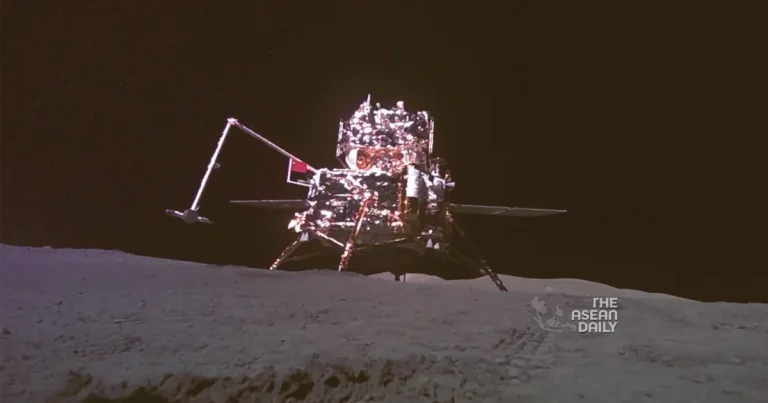4-6-2024 (BEIJING) The ascender of China’s Chang’e-6 probe lifted off from the lunar surface on Tuesday morning, carrying samples collected from the moon’s far side. This unprecedented feat marks a major milestone in the history of human lunar exploration.
The ascender took off at 07:38 Beijing Time and entered a preset orbit around the moon about six minutes later, according to the China National Space Administration (CNSA). The Chang’e-6 probe, comprising an orbiter, a lander, an ascender and a returner, was launched on May 3 and successfully landed on the far side of the moon on Sunday.
After a month-long journey, the lander-ascender combination touched down at the designated landing area in the South Pole-Aitken (SPA) Basin. The spacecraft then completed its intelligent and rapid sampling work, with the collected samples stowed in a container inside the ascender.
During the sampling and packaging process, researchers conducted simulated sampling in a ground lab, based on the detection data sent back by the Queqiao-2 relay satellite. This provided important support for decision-making and operations in every step of the mission.
“The mission has withstood the test of high temperature on the far side of the moon,” the CNSA said, underscoring the challenges overcome by the probe.
The Chang’e-6 mission employed two methods of moon sampling: using a drill to collect subsurface samples and grabbing samples on the surface with a robotic arm. The multiple payloads installed on the lander, including the landing camera, panoramic camera, lunar soil structure detector and lunar mineral spectrum analyzer, all worked well and carried out scientific exploration as planned.
After the sampling was completed, a Chinese national flag carried by the lander was unfurled for the first time on the far side of the moon, a symbolic gesture highlighting the country’s space achievements.
The ascender will now rendezvous and dock with the orbiter-returner combination and transfer the lunar samples. The combination will then fly around the moon, waiting for the right time to return. Near the Earth, the returner will re-enter the atmosphere carrying the precious lunar samples and is scheduled to land at the Siziwang Banner landing site in north China’s Inner Mongolia.




